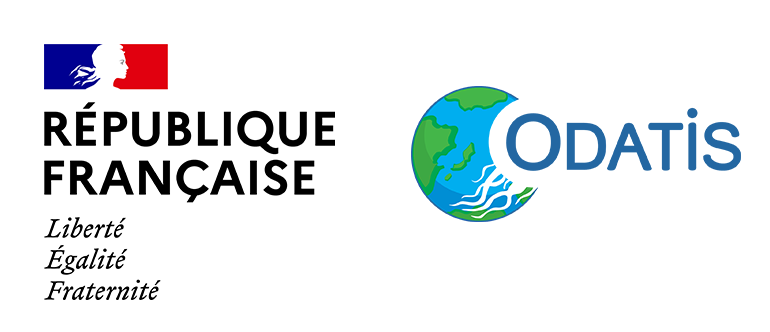Actualités
Liste des actualités
Offre de thèse - Couleur de l'océan avec lidars aéroportés et spatiaux

PhD Fellowship Position in Monitoring the ocean color using air- and space-borne lidar
A 3-year PhD fellowship is proposed by the Laboratory of Oceanology and Geosciences LOG (Wimereux, France) on the use of an airborne lidar to monitor the vertical distribution of the upper ocean.
- Qualifications: Master degree in remote sensing or oceanography or environmental sciences
- Application closure date: March 15 2024
- Position Length: 3-year fellowship from October 2024
- Location: The candidate will be located at LOG, 32 avenue Foch, 62930 Wimereux, France
- Applicants must submit:
- A detailed CV, including the e-mail and phone number for three references and the grades for the master.
- A short cover letter explaining the applicant’s experience related to the position and motivation
- For questions and application’s submission, please contact: Cédric Jamet
- This PhD will be done in collaborations with Cyrille Flamant and Julien Delanoë from LATMOS and the International team at the International Space Sciences Institute
Objectives
Passive space-borne observations of the ocean color have enabled a global view of the distribution of phytoplankton and marine primary productivity. An uninterrupted record of global ocean color data has been sustained since 1997. However, these measurements are limited to clear sky, day-light, high Sun elevation angles, ice-free oceans and are exponentially weighted toward the ocean surface. Moreover, the processing of the ocean color images requires the knowledge of the atmospheric components (gases, air molecules and aerosols).
Lidar (Light Detection and Ranging) is a “laser radar” technique that has been used for a wide range of atmospheric and ocean applications. As an active remote sensing technique, it can overcome some of the above-mentioned limitations of passive observations. Despite several cases that demonstrated oceanic applications of ship-, air- and space-borne lidars, this tool has not received significant attention from the ocean color remote sensing community. Recently, it has regained interest from the ocean community as new studies used the lidar signal from the space-borne CALIOP/CALIPSO and ATLAS/Ice-Sat-2 instruments to estimate the ocean particulate backscatter and showed the feasibility of using both lidars to provide accurate estimates of the ocean color over the globe and in the polar regions (and over the water column for ATLAS). Thus, satellite lidars are a natural complement to passive ocean color radiometric remote sensing, operating under thin clouds, between holes in broken clouds, and in polar regions, providing vertical measurements both during day and night. Lately, the Italian Space Agency started the development of a space-borne lidar, named CALIGOLA, planned to be launched in 2026. The instrument will be a three-band elastic lidar at 355, 532 and 1064 nm with polarization and will enable to detect the variability of the phytoplankton over the vertical. Coupled to passive observations, CALIGOLA will provide for the first time a 3-D view of the ocean color.
In France, the LATMOS laboratory developed in collaboration with DT-INSU and operates an airborne lidar, named LNG (part of the RALI platform, Instrument National INSU) which has three wavelengths 355, 531 and 1064 nm with High Spectral Resolution and polarization capabilities at 355 nm. The High Spectral Resolution Lidar (HSRL) enables the decoupling between the molecular and particles. LNG has been widely used during airborne campaigns for studying the aerosol and clouds in the atmosphere. In September 2021, LNG participated to the CADDIWA airborne campaign located in Cabo Verde. During this campaign, a sea campaign was organized by Cédric Jamet from LOG to collect bio-optical and biogeochemical parameters at fixed stations. Several of these stations were also concomitant to the LNG flight paths.
LNG was only developed for atmospheric applications and has never been used for oceanic applications. The main topic of the
PhD will be to develop an algorithm for processing the LNG data at 355 and 532 nm. The lidar at 532 nm is an elastic lidar. The lidar signal return is basically proportional to volume backscattering coefficient (which is the sum of the backward scattering from water molecules, βW, and suspended particles βP) and the attenuation coefficient of the lidar signal, KL which is a proxy of the diffuse attenuation coefficient KD The parameter βP is of interest, as it is linked to the hemispherical particulate back-scattering parameter, bbp, which is an important in ocean color (as it depends on the size, type and composition of the optically-active marine particles). Unfortunately, this technique cannot separate the backscattered signal from attenuation, contrary to HSRL technique. Two algorithms will be studied : one using the elastic lidar at 532 nm based on a perturbation algorithm or machine learning and the second based on the HSRL (or could also be based on machine learning using only the particulate channel). Once the algorithms developed, the LNG data acquired during the CADDIWA campaign will be processed and the estimates of bbp and KD will be compared to the in-situ measurements. Depending of the quality of the estimates, the LNG archives will be processed to provide, for the first time, oceanic products. At last, these algorithms will also be developed in connection with the development of CALIGOLA.

